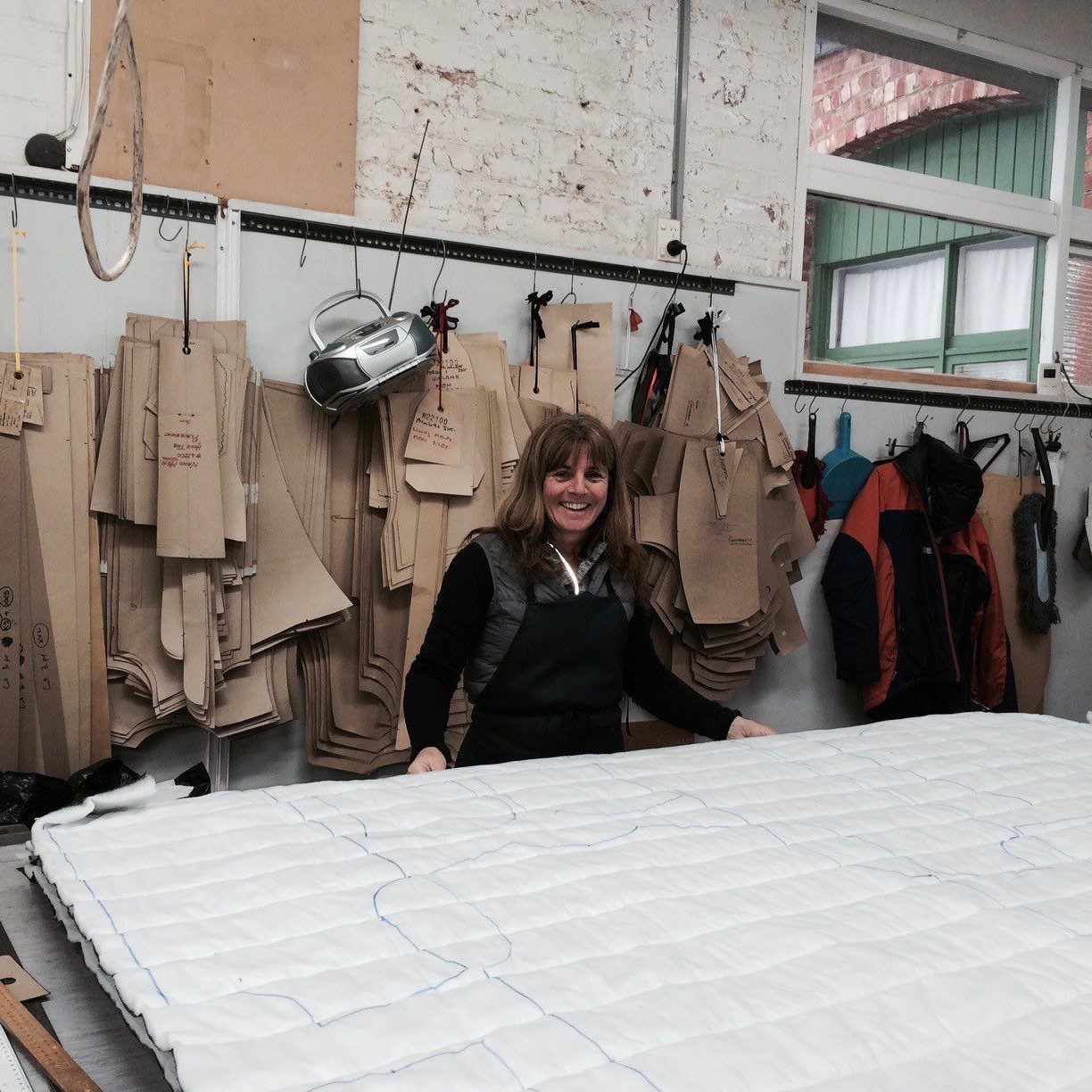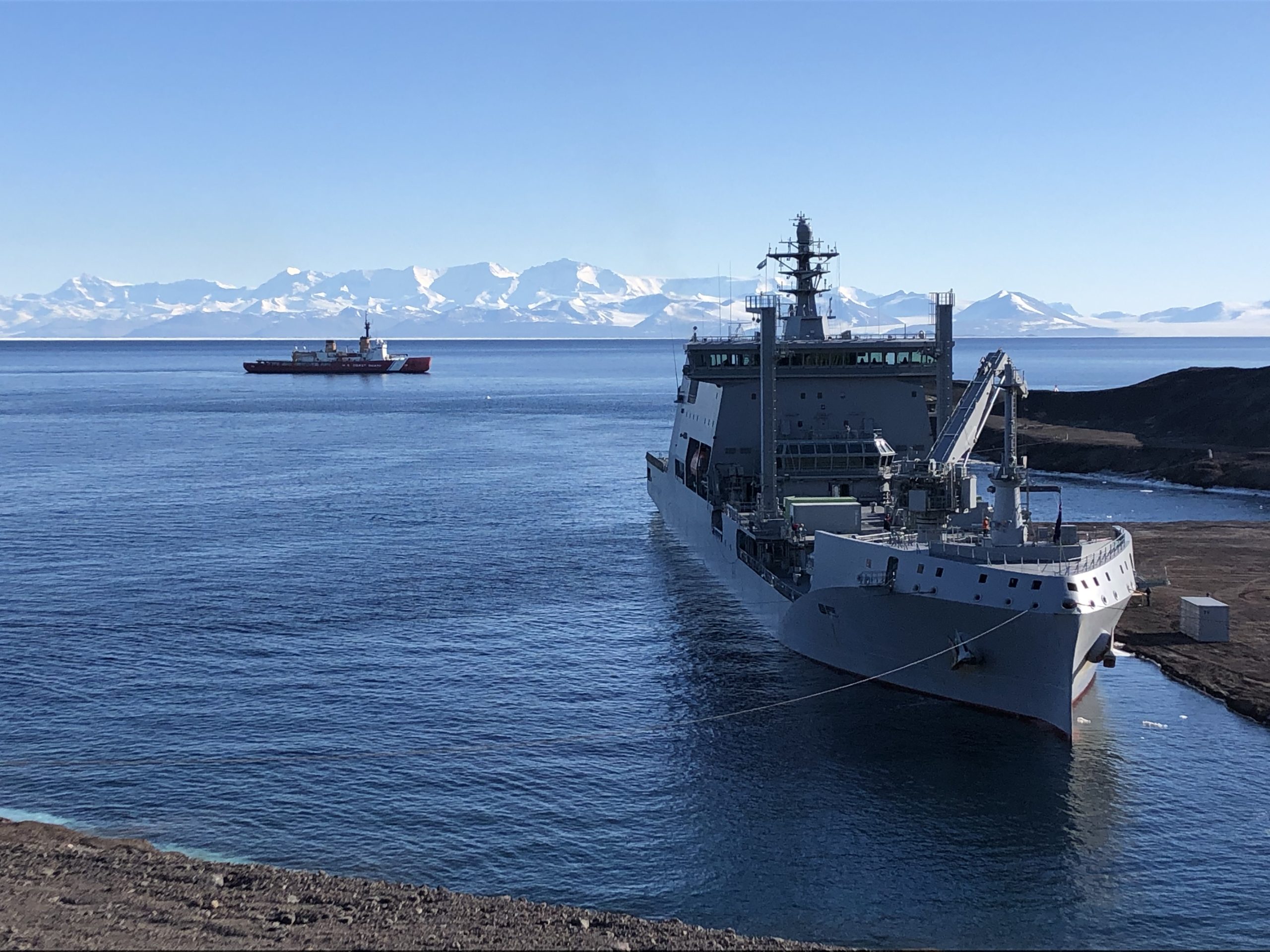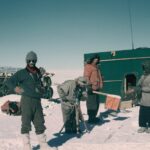HMNZS Aotearoa – Sails to Antarctica
For the first time in 50 years a New Zealand navy supply ship has travelled to Antarctica waters. In January HMNZS Aotearoa berthed at McMurdo Station with supplies to support Antarctica New Zealand’s scientific research programme and the Scott Base re-build.
The HMNZS Aotearoa is a $500 million maritime sustainment vessel. Last year it assisted with New Zealand’s humanitarian assistance and disaster relief operation in Tonga. The HMNZS Aotearoa can refuel ships at sea, has water generation and cargo carrying capacity. Importantly for this mission it is polar rated for sailing in McMurdo Sounds pack ice.
The Navy made an initial approach to Earth Sea Sky mid-August 2021 to obtain a full ECW (Extreme Cold Weather) wardrobe for each crew member. Their initial wish list was for the same clothing issued to Antarctica New Zealand, a wardrobe built for extended polar field work and winter conditions. McMurdo Sound in late summer is not as extreme.
From our past experience working with emergency clothing for NIWA’s Southern Ocean vessel, RV Tangaroa, coastal polar conditions need a different emphasis on design and performance. Essentially it is a short-term survival scenario in damp, very cold but not extreme, cold conditions. The clothing needs to offer maximum warmth using fast dry insulation and fabric. The outer layers need to be waterproof and windproof and, like all efficient polar wardrobes, have layering options underneath so the wearer can add or remove thermal garments depending on their activity, the ambient temperature and wind chill.
It took a number of weeks to decide on the best combination of clothes.
The large outer jacket (large enough to fit a multiple of layers underneath) was the Antarctica NZ’s Turbo Guide. Labelled as a soft shell it’s waterproof laminate between the outer face and soft slippery liner is technically a waterproof hard shell. It is very breathable but 100% windproof. It has a tuck away hood in the collar and is made in a highly visible mango orange colour.

Underneath this jacket is a hooded Primaloft® jacket the Nano. Primaloft is the equivalent of synthetic down. It is light, very bulky, thermally efficient but the most important characteristic is the loft doesn’t collapse when wet. This is the perfect insulation material in a wet, temperate environment. For most Antarctica NZ personnel at Scott Base in summer, the Nano is their go-to garment. Their heavier, and very bulky, down filled ECW jacket is largely redundant at this time of year. The Navy’s Nano is black with a distinctive dash of mango orange under the arms.

Under the Nano Jacket is the second thermal garment. A Polartec® brushed polyester polar fleece. Despite all the discussion about natural fibre, brushed polyester is still the most thermally efficient knitted fabric available for outdoor use (thermal efficiency is warmth for weight). Polar fleece has another two very important properties – it does not absorb water, so it is fast drying, and it allows water vapour from the body to pass through it unhindered. Both of these things are very important when working physically hard in Antarctica.


Lava Jacket (Women’s) Nitro (Men’s)
For below the waist we provided our waterproof Rocket Guide Salopettes (waterproof, bib front overtrousers) and two pairs of Italian microfleece pants.


Rocket Guide Salopettes Micropants
These with a microfleece balaclava and newly designed fleece lined gauntlet mitten meant each crew member was issued with eight items of clothing.
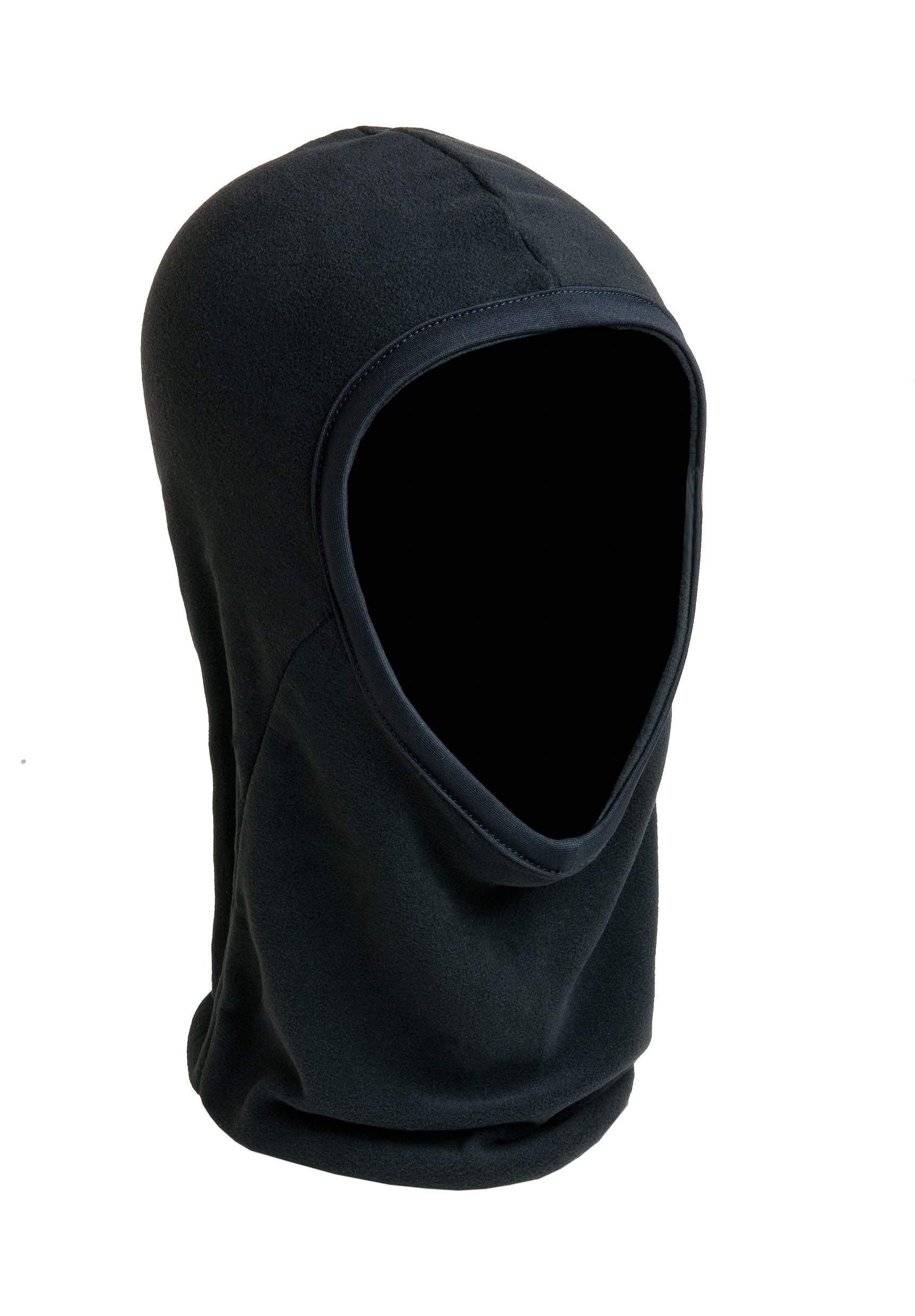
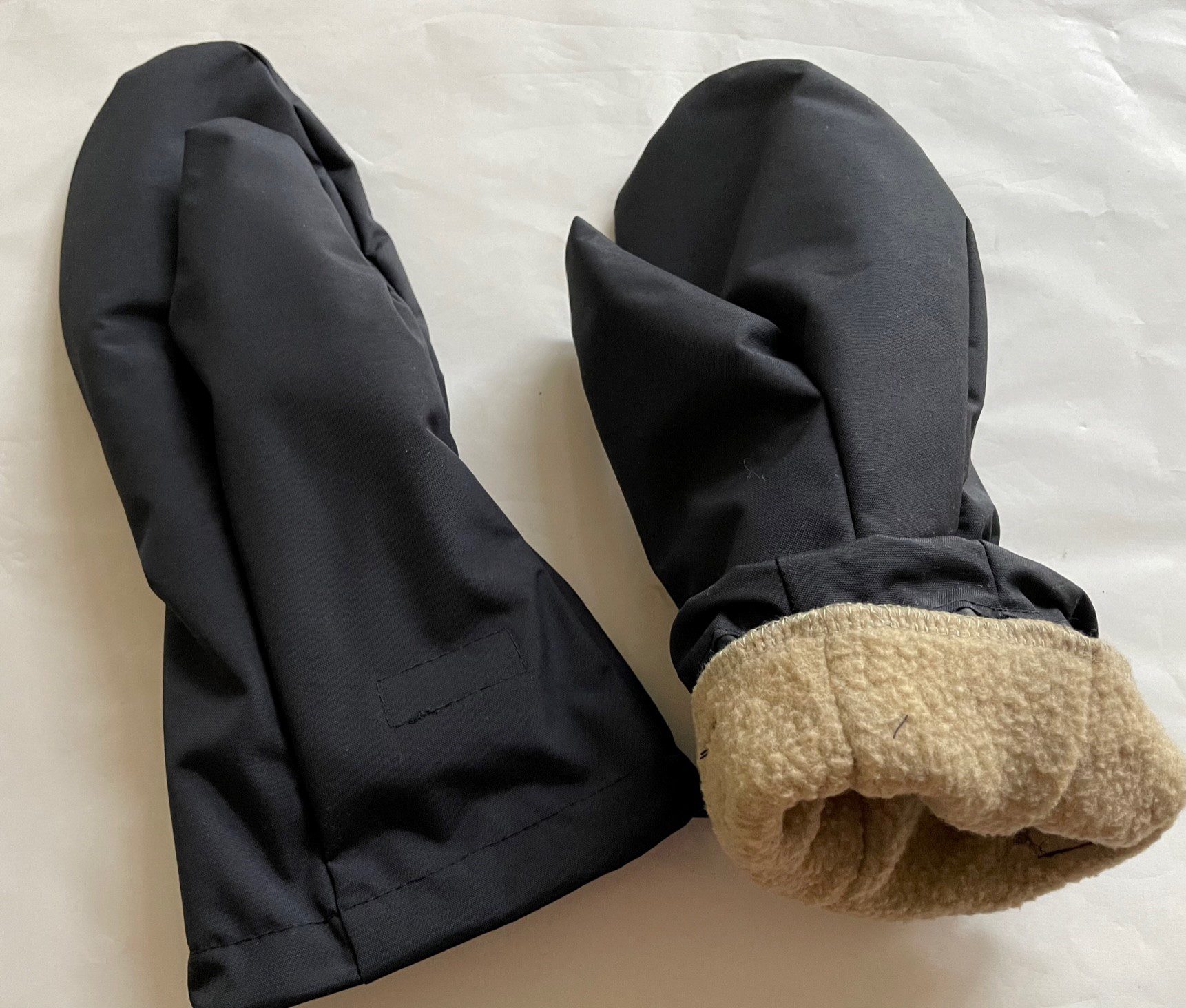
Balaclava Gauntlet Mittens
Once the range was approved and the sizes confirmed we had only eight weeks to manufacture 875 items of clothing. This was a daunting task for both our factories especially for the very time consuming and specialised Turbo, Nano and Rocket Guide Salopettes.
We were conscious of two things as the deadline loomed – for the crew, a ship cannot sail without the crew dressed and for our staff, Christmas is not the same without a holiday.
When watching the account of the voyage our eyes, naturally, focus on the clothing.
